Because of its persistence and uniqueness, fingerprints are widely used in personal identification systems. The widespread use of fingerprinting worldwide is not only a crime prevention, but also a key technology for handling personal affairs and information security.
In the field of fingerprint recognition technology, European and American countries are in a leading position in research and development. ZK Software released ZKFinger version 1.0 in 1992. In 2008, it released ZKTIme7.0, ADMS solution, fingerprint lock, integrated Lumidign and Secugen fingerprints with FIPS201 certification from the US federal government; Segam, France, is safe. One of the market leaders in solutions, with more than 85 branches and branches across 5 continents, the integrated systems they produce are deployed in more than 100 countries. Companies with advanced fingerprint recognition technology in Asia include Hyundai, Korea's Pei Fuji, and Japan's NEC.
Although China has developed late in fingerprint recognition technology, it also has enterprises with the ability to develop, produce and apply fingerprint-specific chips, such as Hangzhou Qianyuan Chip Technology Co., Ltd. and National Technology Co., Ltd.
In the research field of fingerprint image evaluation algorithms, Tabassi et al. evaluate the fingerprint image quality by extracting the contrast and curvature features of each sub-block of the fingerprint image, but this method only analyzes the local texture of the fingerprint image, which is not enough to reflect the global information of the fingerprint image; Hong The person evaluates the fingerprint image quality by calculating the gray-scale variance in the vertical direction of the fingerprint line of each image of the fingerprint image. When the image noise is large, the fingerprint image is not well obtained, which affects the final evaluation effect.
In this paper, a fingerprint image comprehensive evaluation algorithm is adopted to design a fingerprint identification system with information prompt function, and the evaluation result is output to the display screen, which realizes the improvement of the fingerprint recognition success rate, and allows the user to intuitively understand the problem of a certain part of the fingerprint collection. And how to make corrections.
1 fingerprint identification system hardware design
1.1 Embedded fingerprint collection system
The fingerprint identification device with the prompt information includes a processor, and the system structure diagram is as shown in FIG. The processor is connected to the LCD Chinese character display, fingerprint sensor, JTAG debug interface, reset circuit, external SRAM data memory, serial port and USB interface with different interfaces; the power management module provides power management for the chips and circuits in the above parts. The Chinese character display is used to display the result of the initial evaluation of the fingerprint image, prompting the user whether the finger placement is correct, and if not correct, the fingerprint sensor is used to obtain the fingerprint image information of the finger; the JTAG debugging interface is used to connect with the upper computer. Debug; the reset circuit is used to initialize the fingerprint recognition device; the FLASH program memory is used to store the program running by the fingerprint recognition device; the external SRAM data memory is used to store the temporary data generated during the operation of the fingerprint recognition device; the serial port and the USB interface are used for the upper position. The connection communication of the machine; the security controller is the core of the fingerprint identification device and controls the operation of the fingerprint identification device.

Figure 1 Structure of the fingerprint acquisition system
The fingerprint-specific chip refers to a chip product with embedded fingerprint recognition technology, which can realize image acquisition, feature extraction and feature comparison of chips on the chip, which makes the development process simple, and the developer can conveniently realize the function of fingerprint recognition. At the same time, the price of the chip is moderate, which is conducive to popular use.
The fingerprint special chip adopts AS602 chip produced by Hangzhou Qianyuan Chip Technology Co., Ltd., adopts Harvard architecture 32-bit RISC processor core, built-in dedicated DSP instruction set and accelerator. Its main features are the SEA/RSA acceleration engine, built-in memory (Flash/OTP), fingerprint processing accelerator and dedicated algorithm software. The AS602 chip has a clock speed of up to 128 MHz, built-in 128 KB high-speed static random access memory (SRAM), embedded with 1 MB of high-capacity FLASH, 64 kB ROM and 4 kB OTP ROM, and has a rich external interface: in addition to the USB2.0 full-speed interface. It also has 3 sets of USART interface, 4 channel PWM interface, ISO7816 smart card interface, APC main interface, on-chip real clock, symmetric algorithm engine (SEA) accelerator, RSA encryption and decryption engine, true random number generator (TRNG), and 51 channels. GPIO.
1.3 fingerprint acquisition sensor
The FPC1011F fingerprint sensor consists of 152 & TImes; 200 sensor arrays, each of which is a metal electrode. The corresponding point of the finger placed on the sensing surface acts as another pole, and its working principle is a capacitive sensor that changes the distance between the plates. The entire sensor (or a part thereof) is read by reading the instruction of the sensor. The size of the acquisition area is determined by the values ​​of the registers XSHIFT and YSHIFT.
The schematic diagram of the interface between the FPC1011F and the processor chip is shown in Figure 2. Configure USART0 of AS602 to SPI mode. The 61 pin of AS602 is used as the clock output, the 60th pin is used as the data main output, and the 6th pin of FPC1011F is connected. The 59 pin is used as the data main input and is connected to pin 1 of FPC1011F. The FPC1011F pin 4, SPI_CK, is connected to the 61 pin of the AS602 to obtain the system clock.
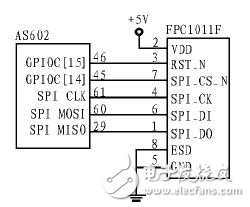
Figure 2 Interface diagram of AS602 and FPC1011F
Set the CPHA and CPOL of the FPC1011F to 0 respectively, and the FPC1011F is the slave. Fingerprint image data is sent through the sensor input FIFO. Fingerprint acquisition through query mode, using the rd_spidtat command to continuously query whether the DA status of the SPI_STATUS register is 1. When the DA status of SPI_STATUS is 1, use the rd_spidata instruction to read the data in the FIFO of the FPC1011F.
1.4 Fingerprint image evaluation status display module
HS1602A LCD is 16&TImes; 2 lines, 5&TImes; 7-character dot-matrix liquid crystal module. Its internal character generator ROM has a character library with numbers and English letters and some special symbols. Although there is no Chinese characters, it can be established by using HS1602A. The characteristics of 7 dot matrix custom fonts form the required Chinese character lattice. The schematic diagram of the interface between the HS1602A and the sensor chip is shown in Figure 3.
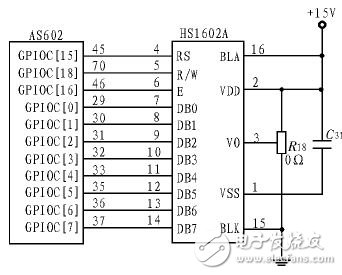
Figure 3 Interface diagram of the AS602 and HS1602A LCD display module
2 Fingerprint image evaluation research and analysis
2.1 Fingerprint image evaluation process
In the process of fingerprint acquisition and input, fingerprint information may not be correctly recognized due to fingerprint quality, placement position, dry and wet state of the finger. In order to improve the efficiency of fingerprint recognition, the collected fingerprint information is first evaluated. The security controller performs fingerprint image processing on the fingerprint image, fingerprint image point pattern calculation, fingerprint gray image pre- and background image separation, fingerprint foreground image area analysis, fingerprint image quality analysis and other image processing processes, and The results of the evaluation are displayed in Chinese characters. If the evaluation is unsatisfactory, the fingerprint image information is re-acquired according to the displayed information until it passes the evaluation. The system work flow chart is shown in Figure 4.
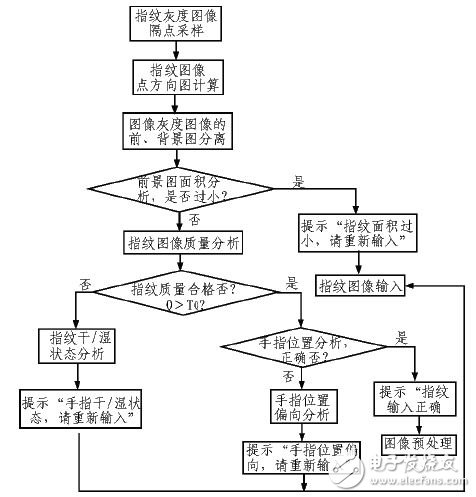
Figure 4 system work flow chart
2.2 Fingerprint image interval sampling
The fingerprint grayscale image is sampled by means of a spacer, and the original fingerprint grayscale image is obtained at the interval, and the data collection amount is reduced without changing the fingerprint feature code.
2.3 Fingerprint grayscale image front and background separation
The partial texture orientation at each pixel point in the gray image of the original fingerprint of the spacer is represented by a dot pattern, as follows:
A fingerprint image is a directional pattern consisting of partially parallel ridges and valley lines. Through the fingerprint image point pattern calculation, each image block in the fingerprint image can be divided into a foreground block or a background block. Using a 7×7 template, the reference point is at the center of the template, and a direction is determined every π/4 from the horizontal position, defining I=1, 2, 3, 4, corresponding to 0, π/4, 2π/4, 3π/4 , π four directions. Calculate the gray level change DI in each direction according to formula (1), compare DI, find the minimum value, and represent the direction of the point, see formula (1):
![]()
In the formula, it is the gray mean value of the point in the I direction, and f1(ik , jk) is the gray value of the point in the I direction.
The foreground block of the image is an image block with fingerprint ridges distributed, and the rest is a background block. Set the foreground block to 1 and the background block to 0 to achieve the front and background image separation of the fingerprint grayscale image. details as follows:
1) Calculate using equation (2):
![]()
Where f(i, j) is the gray value of the (i, j) point; ![]() It is the cumulative sum of the gray values ​​in the I direction; Smax is the upper limit of the accumulated sum value; Smin is the lower limit of the accumulated value. If the condition of formula (2) is met, the current point is the front point; otherwise it is the background point.
It is the cumulative sum of the gray values ​​in the I direction; Smax is the upper limit of the accumulated sum value; Smin is the lower limit of the accumulated value. If the condition of formula (2) is met, the current point is the front point; otherwise it is the background point.
2) According to the proportion of the background points in the small block, it is judged that each image block is a foreground block or a background block. If the number of background points in the small block exceeds the threshold Tb, the image block is considered to belong to the background block, otherwise it is the foreground block.
2.4 Fingerprint image quality analysis
Through the image quality judgment condition, compare the quality evaluation parameter Q with the threshold value TQ. If Q ≤ TQ, the image quality does not meet the requirements, the finger dry/wet state analysis is needed, and the analysis result is prompted on the Chinese character display; if Q 》TQ , indicating that the picture quality meets the requirements, but also need to determine whether the finger position is placed correctly. details as follows:
1) judging whether a foreground image block has a direction advantage according to whether most points in the block belong to a specific direction;
2) Calculate the direction of each image block and find the direction histogram of each block. If the number of pixels having a certain direction D exceeds a preset value T1, the dominant direction of the block is marked as D;
3) The quality of the fingerprint image can be described by calculating the ratio of the continuous dominant direction area to the foreground image of all fingerprints. Adopting a weighting method, the image block that is farther from the reference point, the more reliable the information it contains, the higher its weight;
4) For any image block xi in the foreground image of the fingerprint, the image quality can be determined by the ratio of the weight of the continuous dominant direction block to the weight of all the fingerprint foreground blocks;

q is the relative weight constant, xc is the fingerprint foreground centroid, and Q is the mass ratio;
5) Compare the fingerprint image quality ratio Q with the lower limit value TQ of the fingerprint image quality evaluation. If Q ′ TQ, the fingerprint image quality is qualified. If the finger position is correct, the prompt “fingerprint input is correct†is performed to perform image preprocessing; if the finger position is biased, the bias of the finger position is analyzed, and the corresponding prompt content is displayed.
6) If Q ≤ TQ, indicating that the fingerprint image quality is unqualified, enter the dry/wet state analysis of the finger and prompt the dry/wet state of the finger according to the analysis result.
2.5 finger dry / humidity analysis
According to the fingerprint image analysis, the fingerprint image of the over-dried finger has a small contrast and a large gray scale; the fingerprint image of the over-wet finger has a small contrast and a small gray scale. The finger dry/humidity analysis algorithm calculates the grayscale mean and standard deviation of the fingerprint image. Specific steps are as follows:
1) calculating a gray mean value m of each foreground image block, a standard deviation δ of all pixels of each foreground block, and a gray level mean μ of all pixels smaller than the mean m in the block;
2) Find the contrast of the image block Cd:
Cd = μ / δ (5)
If Cd is greater than the dry image block contrast threshold DTH1, the image block is confirmed as a dry image block;
3) If Cd ≤ DTH1, the difference Var(Cd) of the contrast maximum and minimum values ​​in the neighborhood of image block 8 is also used to compare with the threshold DTH2. If Var(Cd) DTH 2, the image block is marked as a dry image block;
4) Calculate the ratio of all dry image blocks to the foreground image, which is dryness. If the dryness exceeds the threshold DTH3, the finger is considered to be too dry, and the user's finger is over-dried on the Chinese character display screen; otherwise, the finger humidity analysis is performed;
5) To analyze and calculate the finger humidity, introduce the humidity feature quantity:
Cs = μ / δ (6)
If Cs is less than the preset threshold STH1, the image block is marked as a wet image block;
6) Count the ratio of all wet image blocks to the foreground image, which is the humidity. If the humidity exceeds the wet image block ratio threshold STH2, the user is prompted to be too wet. If the humidity ≤ STH2, the fingerprint image is determined to be a low quality image.
2.6 finger position analysis
Regardless of the type of fingerprint, the ridge line is parabolic, and it can be determined whether the finger is deflected by analyzing whether there is a relatively complete ridge line in the central area of ​​the fingerprint image. This article uses a pattern-based tracking method to determine if the finger is placed correctly. details as follows:
1) Construct a coordinate system and construct a coordinate system with the centroid of the foreground image as the origin;
2) In the left half of the x-axis, select an image block whose dominant direction is not 0 as the starting reference block;
3) Judging the dominant direction of the image block according to whether most of the points in the block belong to a certain direction. If the block dominant direction is 0, the starting reference bit block is reselected; if the block dominant direction is not 0, the next image block is searched to the right according to the direction of the current image block;
4) Determine the direction change of the image block and the previous image block. If the direction of the image block and the previous image block changes by more than 90°, it indicates that the direction of the current image block is abrupt, and the direction of the current image block is replaced by the direction of the previous image block according to the continuity of the ridge line. Next image block;
5) If the direction of the image block does not exceed 90°, it is necessary to judge whether a complete ridge line is searched.
If the complete ridge line is found, the captured fingerprint image is correct, the prompt input is correct on the display screen, and the fingerprint image search is ended; otherwise, the current image block is not close enough to the positive half axis of the x-axis, and the next image block needs to be searched. ;
6) Determine if the negative half of the x-axis is searched. If the search is not completed, continue searching; if the negative half of the x-axis has completed the search, you need to search the positive half of the x-axis;
7) The method of searching for the positive half-axis of the x-axis is similar to the negative half-axis of the x-axis, in the opposite direction.
If a complete ridge line is found, the prompt input is correct on the display, and the fingerprint image search is ended; otherwise, the search needs to be continued. If a complete ridge line cannot be determined from the positive and negative half axes of the x-axis, it indicates that the fingerprint image is too biased, and the user is prompted according to the position of the centroid, and the fingerprint needs to be re-acquired.
According to the position of the selected centroid and the result of the judgment, it is displayed on the information prompt display.
3 Digital Watermarking Technology Application of Fingerprint Information
The fingerprint identification device with fingerprint collection status display function can be applied to various occasions, such as fingerprint-based access control system, transaction system, electronic medical record and electronic prescription signature authentication, bank internal management, e-government system and enterprise internal office system. Many fields.
The realization of electronic medical records (EMR) is an important research topic in hospital information systems. Applying the system designed in this paper, the EMR system of the medical institution has been established, as shown in Figure 5 and Figure 6.
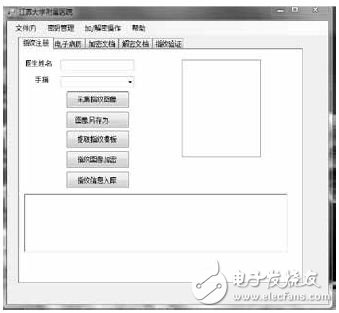
Figure 5 EMR system fingerprint collection interface
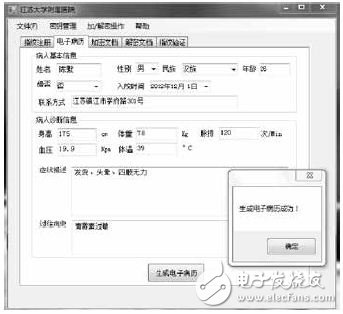
Figure 6 EMR system patient number information entry interface
XML can exchange data on different platforms. The XML document is used to generate an XML document for the electronic medical record, and the Rijindael algorithm is used to encrypt and decrypt the same key. When encrypting, the plaintext is encrypted with a key and written into the document; after decryption, the plaintext is written into the result file.
XML documents for some electronic medical records:
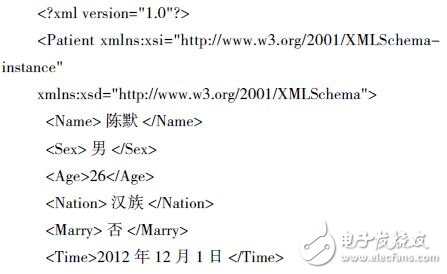
Figure 5 EMR system fingerprint collection interface
4 Conclusion
The fingerprint identification system and fingerprint image comprehensive evaluation algorithm designed in this paper combine the front and the background of the fingerprint image, and make a comprehensive analysis of the image quality, the effective area of ​​the image, the dryness and wetness of the finger, and the bias of the finger position to realize the human fingerprint. The collection and evaluation facilitates the subsequent processing of fingerprint images. The EMR system was established in the medical system by using the fingerprint identification system and the fingerprint image comprehensive evaluation algorithm proposed in this paper. In practical applications, the efficiency of fingerprint recognition is improved and has good stability.
Intelligent chargers step forward to achieve intelligent, flexible and energy-efficient charging performance.
Intelligent chargers combine all the existing technology benefits and new features that assure better communications with the battery and more flexibility of use. The innovative modular design provides highly efficient charging, reliability and ease of service.
Intelligent Battery Charger,Intelligent Lipo Battery Charger,Guided Vehicle Intelligent Battery Charger,Automation Intelligent Rapid Charger
Xinxiang Taihang Jiaxin Electric Tech Co., Ltd , https://www.chargers.be